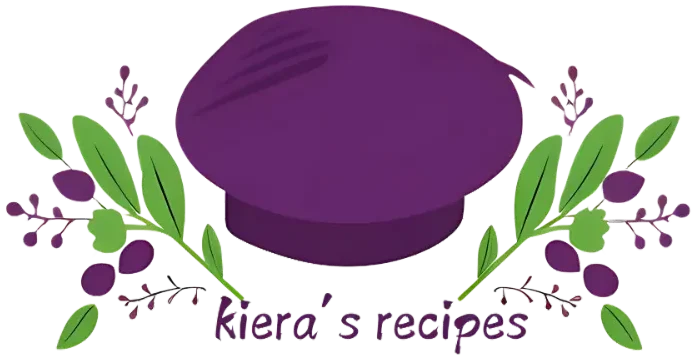How to Get Popcorn Seasoning to Stick Without Butter
Popcorn is a favorite snack for many, but when you’re avoiding butter for health reasons or dietary preferences, getting that delicious seasoning to stick can be a challenge. Thankfully, there are plenty of creative ways to make your popcorn flavorful without drenching it in butter. In this article, we’ll explore different methods that will help you enjoy perfectly seasoned popcorn without adding excess fat or calories.
Why Does Butter Work So Well?
Butter is the traditional go-to for popcorn because of its unique qualities that help bind seasoning to each kernel. When melted, butter creates a moist, slightly oily surface that dry seasonings adhere to easily. The fat content in butter serves as a vehicle for binding seasonings like salt, nutritional yeast, or even sweet toppings like sugar and cinnamon.
Without butter, the popcorn can be too dry for seasonings to stick well. The natural oils and fats in butter not only coat the popcorn but also enhance its flavor by carrying the seasoning deep into the kernels. Additionally, warm, buttery popcorn tends to remain tacky longer, giving seasonings more time to stick. However, since not everyone can or wants to use butter—whether for dietary, health, or preference reasons—finding alternative methods is key.
Understanding how butter works as a binding agent can help you find replacements that offer similar results without compromising on taste or texture.
How to Get Seasoning to Stick Without Butter
Here are some of the most effective butter-free methods to help your popcorn hold onto flavor:
Use Oil Substitutes
Instead of butter, light oils such as olive oil, coconut oil, or avocado oil can work wonders. Oils contain fats that mimic the properties of butter in terms of helping the seasoning stick. However, the key is moderation. You want enough oil to create a tacky surface but not so much that it makes the popcorn soggy.
- Method:
Pour a small amount of oil into a large bowl of popcorn and stir the popcorn with your hands or a spoon to ensure that each piece is lightly coated. The warmth of the popcorn, combined with the light coating of oil, will help the seasoning to adhere. - Best Oils for Popcorn:
Coconut oil is a popular choice because it adds a slight sweetness and provides a rich flavor profile that pairs well with both savory and sweet toppings. Olive oil is excellent for savory seasonings like garlic or herbs, while avocado oil has a higher smoke point, making it great for stovetop or air-popped popcorn.
If you’re avoiding oils altogether but still want great flavor, you can try making popcorn without oil by following this guide.
Try Water or Vinegar Mist
If you’re looking to cut out oils entirely, a water mist or a flavored liquid such as vinegar can be a great alternative. Water won’t alter the flavor of the popcorn but will provide enough moisture for the seasoning to stick. Vinegar, on the other hand, adds a zesty tang that pairs especially well with salt and nutritional yeast.
- Method:
Use a spray bottle filled with water or vinegar to lightly mist your popcorn. The key is to apply just enough moisture to make the popcorn tacky without making it soggy. After misting, quickly toss the popcorn with your desired seasonings, such as salt, chili powder, or nutritional yeast. - Flavor Tips:
Vinegar works exceptionally well if you want a salt and vinegar flavor profile. You can also experiment with different types of vinegar, such as balsamic or apple cider vinegar, for unique taste combinations. Water is neutral, but adding a squeeze of lime juice to the mist can enhance the flavor and help seasoning adhere better. Find out more about the benefits of adding nutritional yeast to your popcorn here.
Steam the Popcorn
Using steam to coat your popcorn in moisture is another simple and oil-free method to help seasoning stick. This method is great for people who prefer their popcorn to remain as low-fat as possible while still achieving maximum flavor.
- Method:
Start by boiling water in a pan and place a colander over the steam. Put your popcorn in the colander and toss it over the steam for about 30 seconds. The steam will add just enough moisture to help the seasoning cling to the popcorn without making it soggy. - Pro Tips:
Be cautious not to over-steam, as this can cause the popcorn to lose its crispness. Once you’ve finished steaming, quickly toss the popcorn with your preferred seasoning. This method works particularly well with lighter seasonings such as nutritional yeast or salt, as the steam helps these powders stick more evenly.
Pre-Season the Kernels Before Popping
A more proactive method is to season the unpopped kernels before you start cooking them. By coating the kernels with oil and seasoning before popping, you ensure that the flavors are incorporated throughout the popcorn as it expands.
- Method:
Mix your unpopped kernels with a small amount of oil and your chosen seasoning. Pop the kernels on the stove or in an air popper, allowing the seasoning to cook into the popcorn as it pops. You can always add more seasoning after popping if needed, but this method ensures a thorough, even coating from the start. - Best Seasonings for Pre-Coating:
Seasonings that work best for this method include garlic powder, paprika, cayenne pepper, or a simple mix of salt and pepper. Pre-seasoning also works well with flavored salts or spice mixes.
Flavorful Alternatives to Butter-Based Popcorn
The best part about using butter-free methods is that it opens the door to a world of creative flavor options. Once you’ve found your preferred method for getting the seasoning to stick, it’s time to experiment with flavor combinations. Here are some liquids that not only help the seasoning stick but also enhance the flavor of your popcorn:




